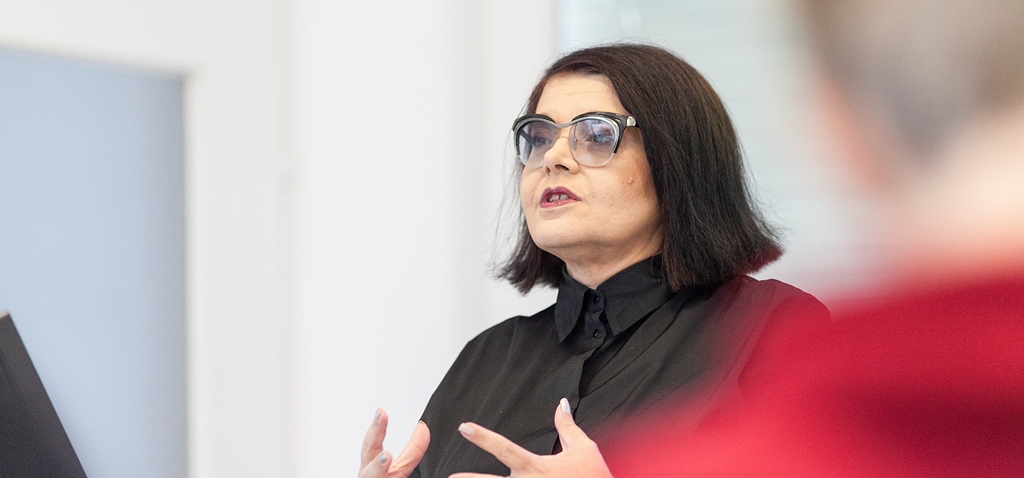„Infelicitous“ Participatory Acts on the Neoliberal Stage
Participatory art’s promises and hopes for democratization of society
Among the many different categories for characterizing participatory art practices, those suggested by the art market researcher Alan Brown based on different media and professional designations remain especially relevant: inventive, interpretive, curatorial, observational, ambient arts participation, and politically driven participatory projects (Brown 2006). (*6) Another interpretation of participatory art’s call for dismantling social hierarchies can be linked to Niklas Luhmann’s theory of social systems, which focuses on questions of communication, the relationship between power and trust, and the construction of truth within “art as a social system.”*4 *(4)
(*6) Another interpretation of participatory art’s call for dismantling social hierarchies can be linked to Niklas Luhmann’s theory of social systems, which focuses on questions of communication, the relationship between power and trust, and the construction of truth within “art as a social system.”*4 *(4)
However, the crucial distinction is between two different types of participatory art projects: the first type, based on the various waves of artistic and curatorial/institutional critique, (see Möntmann 2009: 155-161; (*7) Alberro/Stimson 2009;
(*7) Alberro/Stimson 2009; (*8) Steyerl 2006
(*8) Steyerl 2006 (*9)), is concerned with participation within the art system and deals with the relationship between the a) art institution–audience, b) artist–art institution (museum, gallery), c) artist–curator, etc. I see this first branch of participatory art as closely linked to and instrumental for institutional-critique.
(*9)), is concerned with participation within the art system and deals with the relationship between the a) art institution–audience, b) artist–art institution (museum, gallery), c) artist–curator, etc. I see this first branch of participatory art as closely linked to and instrumental for institutional-critique.
Although still relevant, the limits of such art practices have already been pointed out by the common criticism that the outcome of institutional critique is reviving the art institutions, but does not lead to fundamental institutional change.*5 *(5) Unfortunately, even though the main aims of participatory art stemmed from the need to deconstruct existing hierarchies between “high” and “low” art and culture and were therefore linked from the outset to institutional critique and other critical practices and discourses, it rarely manages to go beyond an individual-centered artistic practice and does not overstep an aesthetic-centered authority although it strives to become a means for expanding the art field’s projections, promises, and expectations.*6 *(6)
The second type of participatory art practice deals with participation as a means for establishing a more democratic society in general—its main prerogative is therefore to foster more profound social and political changes that are not limited solely to changes within the art system. This more ambitious kind of participatory art induces the need to reflect on participation in the more general socio-political context of contradictions in contemporary democratic societies. My main claim in the earlier text from 2006 was that rather than looking at participatory art merely in the context of art history and curatorial practices, a perspective dominating art circles and literature on art at the time, a wider social analysis that includes philosophical, cultural, and socio-political theories of democratization of art and its institutional structures would facilitate a better understanding of participatory art and its discourse. The critical responses to some of the more recent art projects that have claimed to use relational and participatory strategies, voiced by their participants, other artists, and activist initiatives confirm the need to challenge elitist and hierarchical structures in the context of conceptually and politically defined critical art practices.*7 *(7)
This is not to say that all participatory art discourse is misconstrued, nor is it an attempt to criticize its emphasis on social and ethical values over aesthetic and formal components. Art theories are not always capable of locating the gaps between participation’s promise in theory and its shortcomings in concrete art projects in different contexts. I am actually interested in the promises and hopes raised by establishing certain unique relations with subjects in such projects, but it is not enough to locate them within the “laboratory conditions” of art galleries; instead, it is also vital to reflect on these projects in relation to both the real life of their participants and the general social context. Philosophical, political, and sociological theories are currently appropriated mainly through post-conceptual, socially and politically engaged art, or through art activism. However, similar art discourses and practices, such as community-based art projects, were produced by artists in the 1960s and 1970s, for example by Stephen Willats, and anticipated contemporary theory and practice.*8 *(8)
Suzana Milevska ( 2016): „Infelicitous“ Participatory Acts on the Neoliberal Stage. Participatory art’s promises and hopes for democratization of society. In: p/art/icipate – Kultur aktiv gestalten # 07 , https://www.p-art-icipate.net/infelicitous-participatory-acts-on-the-neoliberal-stage/



 Artikel drucken
Artikel drucken